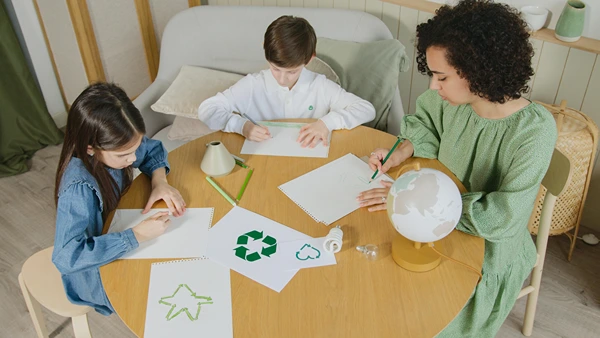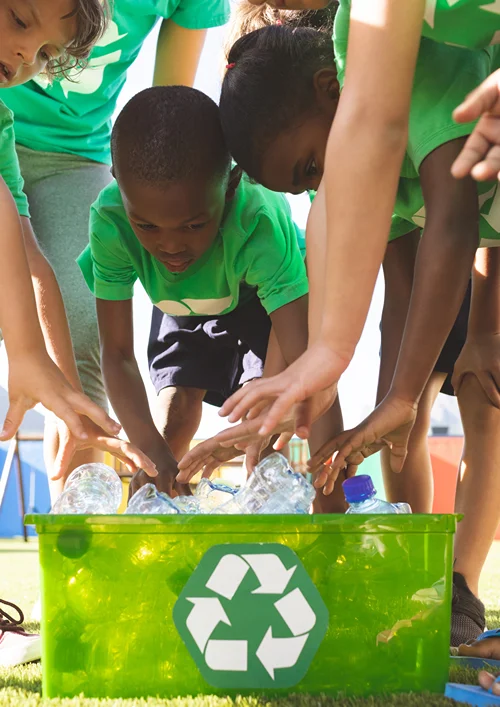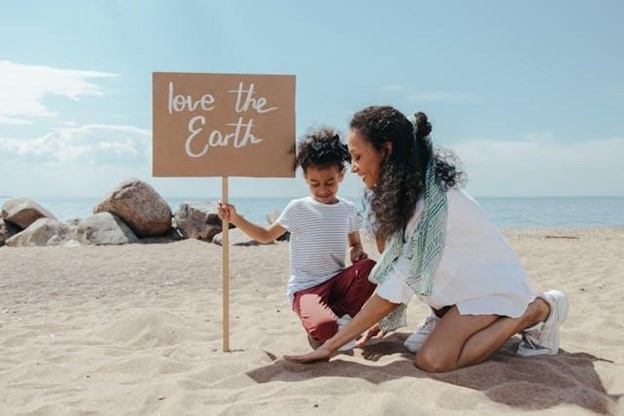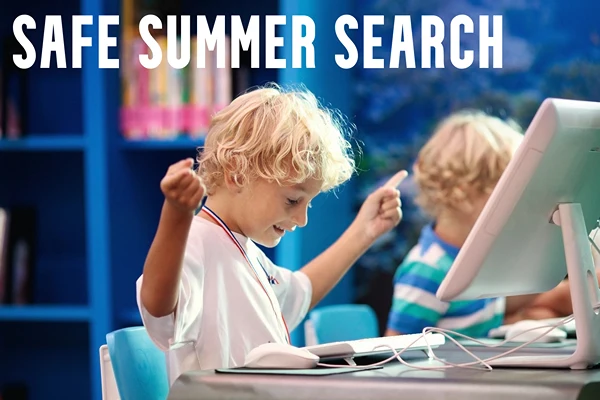Safe and Sustainable Products: Teaching Kids About Product Origins and Smart Choices
Eco-conscious living goes beyond being a theoretical principle. It’s a practice most parents live by. Thus, it’s equally important to impart such values to the younger generation. This calls for the need to educate the little ones about the safety and sustainability of the products they use every day, from toys to clothes.
Understanding the origins of different products and how they create a bigger impact teaches children valuable lessons. It develops a sense of stewardship. Through such, they can understand the ripple effect a small decision holds.
Understanding Where Products Come From
One thing many children don’t realize is how different products go through a unique journey. From sourcing raw materials to delivering them to doorsteps, the process can be complex. Satisfy their curious minds. Teach them the origins of the things they’re using.
For example, a wooden toy starts as a wood in the forest. It’s then sustainably harvested and processed. Skilled artisans carve them into fun shapes, painted, and delivered. In the same way, clothes start from renewable resources like cotton or wool. They go through a manufacturing process that includes cutting, dyeing, and sewing, among other steps. Even food on the table has a long path that includes planting from seeds, harvesting, processing, and packaging.
Most kids will find the concept boring when explained. Find a way to make it more interesting while keeping it informative and educational. Choose something that they love, such as a favorite toy. This way, they will be more interested when you explain the product’s origin. You can even create a product journey map and use colorful graphics to trace the origin of a product. Make things even more interactive by visiting a local farm or factory and letting children have hands-on experience.
Recognizing Sustainable Materials
Teach them that not all materials are the same. Some products can be made from finite resources and their production harms the environment in many ways. Educate them on the benefits of such materials, so they will be encouraged to choose them over their harmful alternatives. Discuss the different elements that make sustainable products.
Introduce them to products made from organic cotton, bamboo, and recycled plastics. They can play a sustainable scavenger hunt. Let them go over the house. Bring them to the bedroom, kitchen, bathroom, and other places. Then ask them to pick different products they believe are made using green components. Break down the components in each product, so they can differentiate what’s good from what’s bad.
For a more first-hand experience, start a small DIY project. They can make toys using recycled materials. Let them sew hand towels using fabric scraps. Visiting a farmer’s market is also a good idea. It’s the perfect opportunity for them to identify products that promote sustainable living.
Making Informed Decisions
Most parents are guilty of deciding for their children. However, it’s also good to empower them to make decisions themselves. Teach them how to assess products for safety and sustainability. Introduce basic criteria, such as materials, durability, and origin. Encourage them to ask questions, such as about the ingredients in their food or the components in their toys.

Photo by Artem Podrez from Pexels
Emphasize the importance of quality over quantity. Let them know to recognize products with superior quality that can last a long time. Don’t spoil them. Buy only what they need. Teach them how to minimize clutter. By doing so, they’re also minimizing their carbon footprint.
Those who are old enough should learn how to read product labels. They must be familiar with different certifications that indicate sustainability. This way, they can easily identify which ones are worth buying or having.
Involve them when shopping. Bring them to the grocery, mall, or market. Let them pick stuff they want based on what they know. And if they choose something that doesn’t align with sustainability, explain why they should opt for an alternative. Encourage questions, no matter how silly they may sound. Have a healthy discussion.
Start Sustainable Practices at Home
Your home plays a critical role in modeling the right behaviors. So, if you want kids to choose safe and sustainable products, start in your house. Begin by auditing everything that you have, from appliances to soaps, food to toys. Get rid of those that contain harmful chemicals. Switch to energy-efficient bulbs. Use programmable devices. Turn off and unplug devices when not in use.
Adopt a waste reduction strategy to teach kids the importance of going green. Start a compost to reuse biodegradable materials. Practice recycling by giving new life to waste. Minimize single-use items.
The most important thing is to involve kids in making sustainable choices. Think of projects that pique their interest. Do things that they can apply beyond a single task. The goal is to impart a life-long lesson, not just to kill time with a one-off task.
Use the Right Resources and Tools
Investing in resources and tools makes it easy to teach sustainability to children. They’re effective and make things fun.
- Books: Choose story books with colorful pictures to grab attention. They can explain sustainability in such a way that’s easy for young minds to comprehend.
- Interactive Apps: Make the most of their screen time. Choose apps and online games that can teach a thing or two about green living.
- Visual Aids: Display posters, charts, and infographics that teach children about choosing safe and sustainable products.
- DIY Kits: From art to gardening, different kits contain sustainable products that can help level up kids’ knowledge of the environment.
- Community Programs: Let kids participate in workshops and classes that promote going green. This is also a great way to meet like-minded individuals.
Wrapping Up
The everyday products we use affect our lives in many ways. Depending on our choices, they impact the environment and our health. So, pay attention! And more importantly, teach your children. Nurture their young minds and teach them about product origins, including the materials and places of production. This way, they can easily differentiate good from bad. It’s a lesson that can bring valuable benefits.






